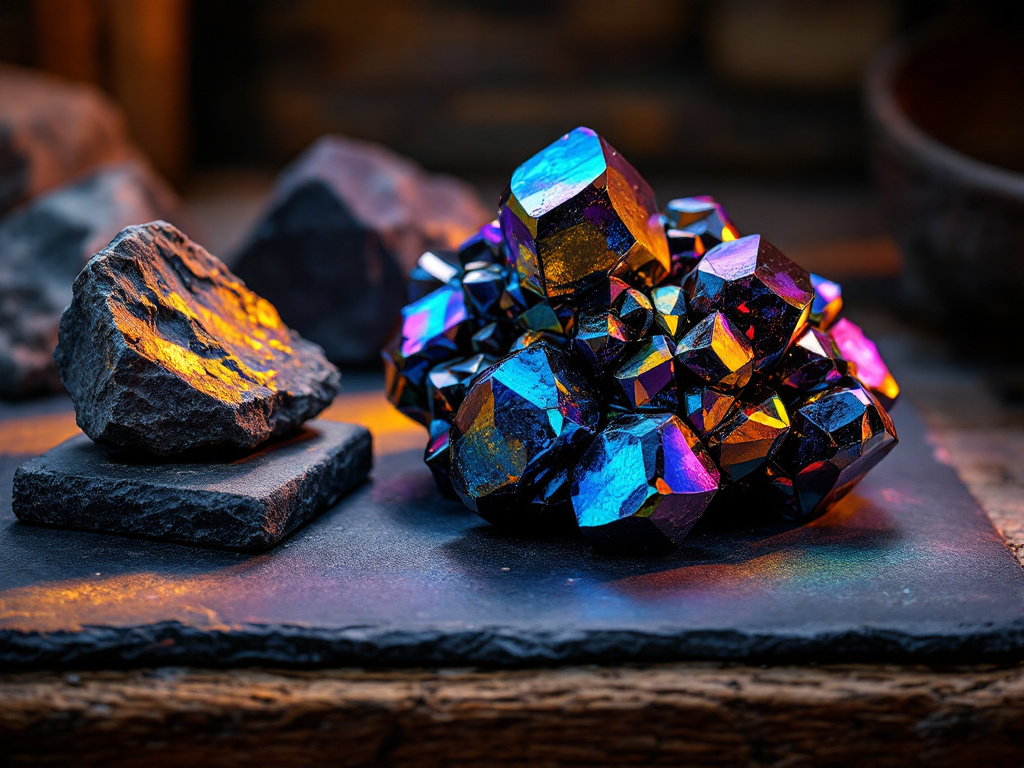🌍 Hematite (Fe₂O₃), the iron oxide mineral that paints Earth’s landscapes in crimson hues, is a gemologist’s treasure and an industrial powerhouse. Known for its metallic luster, blood-red streak, and magnetic allure, this mineral has captivated humans for millennia. In this guide, we’ll unveil hematite’s secrets—from its geological origins to its role in jewelry and beyond.
What is Hematite?
Fe₂O₃: The Science Behind the Sparkle
Hematite, or iron(III) oxide, is composed of 70% iron and 30% oxygen. Its name derives from the Greek “haima” (blood), referencing the vivid red streak it leaves when scratched. Key properties include:
| Attribute | Details |
|---|---|
| Hardness | 5–6 on Mohs scale (except powdery varieties) |
| Density | 5.25 g/cm³ |
| Crystal System | Trigonal (rhombohedral) |
| Streak | Red to reddish-brown |
Hematite Varieties & Global Sources

1. Ocher Red: The Powdery Classic
The most common form, ochre red hematite, is fine-grained and used in pigments. Found in sedimentary deposits, it’s a staple in art and cosmetics.
2. Specularite (Micaceous Hematite)
This shimmering, flaky variety, like the samples from Fichtelgebirge, Germany, reflects light like tiny mirrors. Ideal for ornamental stones!
3. “Glass Head” Hematite
Aggregates of rounded nodules, resembling skulls, earn this type its eerie nickname. A must-have for collectors.
4. Itabirite: Brazil’s Banded Beauty
Combined with quartz, hematite forms itabirite—a striped rock from Brazil’s Itabira Mountains.
5. Elba’s Rainbow Crystals
The Isle of Elba boasts iridescent, rhombohedral hematite crystals. Their surface oxidation creates dazzling rainbow hues!
How to Identify Hematite
- ✅ Streak Test: Rub it on unglazed porcelain—true hematite leaves a red-brown streak.
- ✅ Magnetism: Some varieties are weakly magnetic.
- ✅ Heft: High density (5.25 g/cm³) makes it feel heavier than similar stones.
🔗 Rakuten Picks:
Hematite in Gemology & Everyday Life
Jewelry Care Tips
- Avoid prolonged water exposure to prevent rust.
- Clean with a dry microfiber cloth.
Industrial Powerhouse
Hematite is a primary iron ore that fuels steel production. It’s also used in radiation shielding and polishing.
FAQ: Your Hematite Questions Answered
Q: Is hematite toxic?
A: Non-toxic, but avoid inhaling powdered forms during cutting.
Q: Can hematite rust?
A: Yes! Keep it dry to maintain its metallic shine.
Q: Why is it called “bloodstone”?
A: It’s a red streak, and historical pigment use linked it to blood symbolism.
🌐 Internal Links:
How to Clean Gemstones: A Step-by-Step Guide
🔬 Authority Backlinks:
💡 Why Trust Pure Gemology?
Our guides are crafted by certified gemologists, aligned with Google’s E-E-A-T standards. We blend scientific rigor with practical insights to empower your gem journey!
📸 Featured Image: Iridescent hematite crystals from Elba (Pure Gemology Archive)

